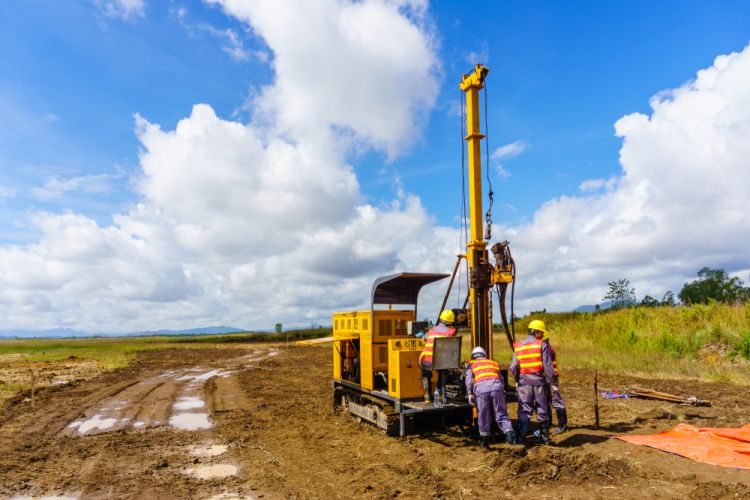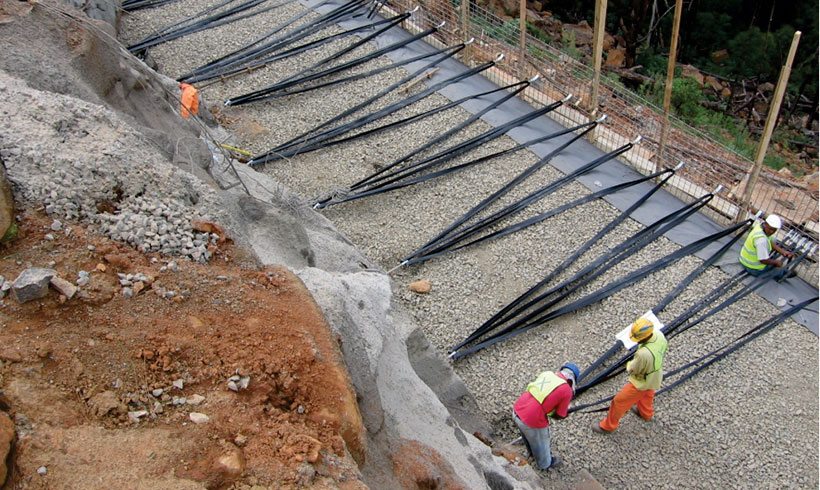Getting The Specialized Geotechnical Engineering Solutions To Work
Getting The Specialized Geotechnical Engineering Solutions To Work
Blog Article
The Facts About Specialized Geotechnical Engineering Solutions Uncovered
Table of ContentsSpecialized Geotechnical Engineering Solutions Fundamentals ExplainedSpecialized Geotechnical Engineering Solutions - Truths9 Simple Techniques For Specialized Geotechnical Engineering SolutionsFascination About Specialized Geotechnical Engineering Solutions
They carry out website examinations, accumulate samples, do research laboratory tests, and assess data to review the suitability of the ground for building and construction tasks. Based on their searchings for, geotechnical designers supply suggestions for foundation layout, slope security, maintaining frameworks, and mitigation of geotechnical risks. They team up with various other specialists, such as engineers, architectural designers, and building and construction groups, to make sure that geotechnical factors to consider are integrated into the general task layout and implementation.
Structure Design: Geotechnical engineers play a critical role in making foundations that can safely support the intended structure. They analyze the soil problems and lots requirements to establish the appropriate foundation type, such as shallow structures (e.g., footings), deep foundations (e.g., piles), or specialized methods like dirt enhancement. They consider elements such as negotiation restrictions, bearing ability, and soil-structure interaction to create optimal structure styles.
The Ultimate Guide To Specialized Geotechnical Engineering Solutions
Right here are some sorts of geotechnical engineers: Structure Designer: Foundation designers focus on designing and analyzing foundations for frameworks - Specialized Geotechnical Engineering Solutions. They evaluate the dirt problems, tons requirements, and site features to figure out the most proper structure kind and design, such as shallow structures, deep foundations, or specialized methods like heap foundations
They execute field screening, collect samples, and evaluate the collected information to characterize the dirt residential properties, geologic formations, and groundwater conditions at a website. Geotechnical Instrumentation Designer: Geotechnical instrumentation designers concentrate on monitoring and measuring the habits of dirt, rock, and frameworks. They mount and maintain instrumentation systems that monitor factors such as soil negotiation, groundwater degrees, incline motions, and structural displacements to analyze performance and supply early warnings of possible issues.
In the workplace setting, geotechnical designers make use of specialized software devices to do computations, produce layouts, and analyze information. Specialized Geotechnical Engineering Solutions. They prepare reports, review task specs, communicate with clients and staff member, and coordinate project tasks. The workplace setting offers a conducive atmosphere for research, evaluation, and cooperation with other specialists associated with the job
They often go to job sites to conduct website investigations, analyze geotechnical problems, and gather information for analysis. These check outs include traveling to different places, occasionally in remote or tough surfaces. Geotechnical designers might perform dirt tasting, conduct tests, and monitor construction tasks to make sure that the geotechnical aspects of the job are being applied appropriately.
The Ultimate Guide To Specialized Geotechnical Engineering Solutions
Geotechnical designers additionally function in specialized geotechnical labs. In these centers, they conduct experiments, do tests on dirt and rock samples, and examine the engineering residential or commercial properties of the products. Geotechnical lab designers work extensively in these settings, dealing with screening tools, running instruments, and videotaping information. They collaborate with various other lab staff to ensure precise and dependable testing results.
Maintaining Walls: Developing wall surfaces that keep back soil to stop landslides and give stability on sloped terrains. Embankments and Earthworks: Creating embankments for roads, trains, and dams to guarantee they stay secure under tension. The mining industry relies greatly on geotechnical engineering to guarantee the security and longevity of its procedures.
With this in mind, we have made our program to prepare trainees for success. The Geotechnical Design program at the University of Delaware uses possibilities for sophisticated study and study in: Dirt and rock technicians Soil-structure interaction Constitutive modeling Computational geomechanics Foundation and earth frameworks design Ground renovation Slope security and landslide stabilization Liquefaction of dirts and quake engineering Laboratory characterization of geomaterials and dirt support Environmental geotechnics Given the solid need for improvement to our country's infrastructurethe American Society of Civil Engineers offered the united state
Geotechnical design is a branch of civil engineering; nonetheless, it includes utilizing clinical techniques and principles to gather and translate the physical homes of the ground. Geotechnical engineers are associated with all stages of the design of frameworks, from principle to construction. Their job is important in the style and planning procedure as they evaluate the stability of soil, clay, silt, sand, and rock, prior to building beginning.
Specialized Geotechnical Engineering Solutions for Dummies
This is complied with by a ground examination based on the findings of the workdesk research study and involves test matching and sampling to discover any kind of possible issues. Geotechnical engineers work within multidisciplinary groups, supported by intermediate and junior designers as well as by CAD service technicians. As an elderly geotechnical designer on a hydro plant project, tasks might consist of taking part in technical testimonials (e.g., peer reviews), tailings clog examinations, dam safety testimonials, and various other studies associated with the style and building and construction of mine waste facilities.
While some professionals specialise solely in geotechnics, others might function under titles like design rock hound or ground engineer within similar capacities. As a geotechnical designer, you'll require to: construct and preserve partnerships with customers and other experts involved in the website, throughout each projectmaintain safety and security Your Domain Name standards on website bear in mind price effects when you make recommendationsstudy geological maps and aerial photos from a series of resources and from various time periodsexamine building intends to see just how practical they are based upon your understanding of the siteinvestigate dangers or geological risks for the sitesearch for environmentally sensitive attributes, such as land fill begin to establish factual and expository ground modelsplan area investigationsdrill and evaluate samples of bedrock, dirt, groundwater and added materials monitor other specialists read what he said on sitesolve technological problems as they occur, such as unexpected frameworks at drill sitesmonitor conditions during and after building and construction to make certain structures are stable in the short and lengthy termadd information gathered on site to your preliminary researchcreate geotechnical computations, drawings, and 2 or three-dimensional computer models interpreting the datamake referrals regarding the proposed usage of the site.
There are lots of possibilities to discover here satisfy brand-new individuals, as you'll collaborate with a variety of experts at every website. The job can be stressful as you might be accountable for the safety of others while on site. There is additionally a high level of financial duty, as the recommendations you make can have significant expense effects.

Report this page